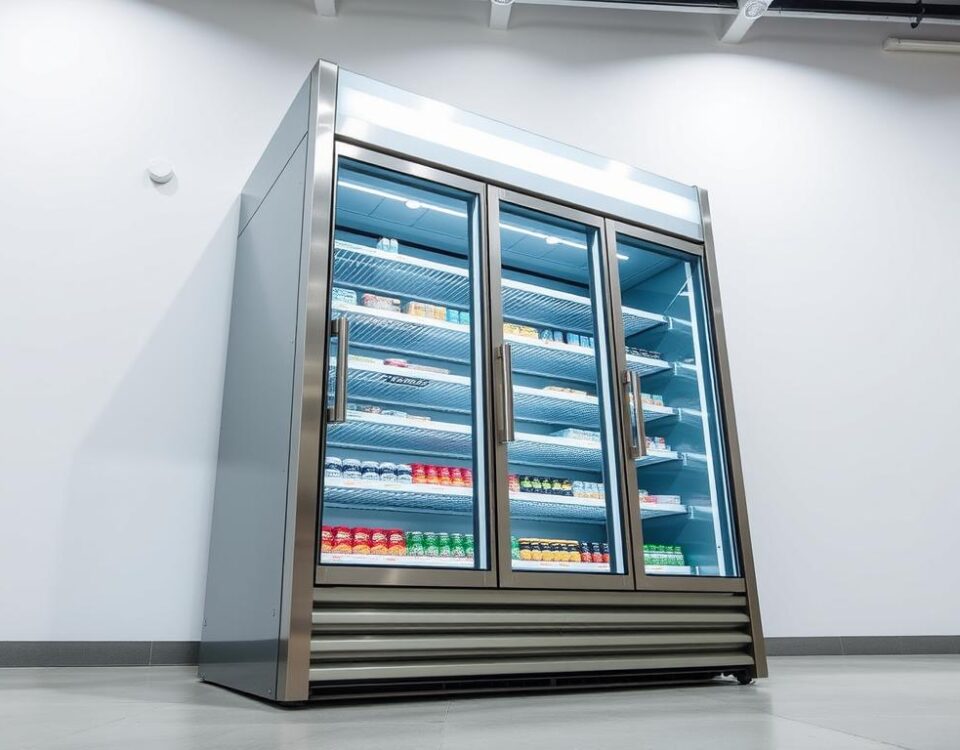
How to Make Traditional Japanese Sushi Rolls in Your Own Kitchen
May 3, 2025
The Ultimate Guide to Homemade Mexican Tacos from Scratch
May 4, 2025I’ll never forget the first time I bit into a perfectly layered croissant at a tiny Parisian bakery. The crisp sound of golden layers shattering, the rich aroma of butter—it felt like tasting sunlight. That moment sparked my decade-long quest to recreate that magic at home, and today, I’m sharing every secret I’ve learned.
Early attempts? Let’s just say my kitchen resembled a flour bomb site. But through trial, error, and mentorship from bakers in France, I cracked the code. This two-day process isn’t just mixing and rolling—it’s a dance between détrempe (the initial dough) and tourage (butter folding).
You’ll need three non-negotiables: high-protein flour, European-style butter (82% fat minimum), and whole milk. Forget shortcuts—the 15-hour chilling periods create those iconic air pockets. But don’t worry: I’ve streamlined the steps so even first-timers can succeed.
What makes this guide different? I’ve combined traditional techniques with practical tweaks. For instance, using a ruler ensures consistent layer thickness, while temperature-controlled resting prevents butter leaks. You’ll learn exactly when the dough whispers “I’m ready” during fermentation.
Key Takeaways
- Authentic croissants require 2 days for proper gluten development and flavor
- European butter and bread flour are non-negotiable for texture
- The “lock-in” folding technique creates 27+ layers
- Oven temperature drops prevent burning without sacrificing crispness
- Patience trumps speed—rushed dough won’t rise properly
Introduction to Parisian Croissant Artistry
There’s a rhythm to creating pastries that feel like edible poetry. My obsession began not in a kitchen, but at a sunlit café table where flakes of golden pastry clung to my fingertips like confetti. That first buttery bite wasn’t just breakfast—it was a masterclass in balance between crispness and tenderness.
The Allure of Authentic French Pastries
What makes these creations iconic? It’s the 27 layers whispering secrets of patience. During my apprenticeship, a baker once told me, “Good dough breathes like a living thing.” I learned this truth the hard way when my early attempts at roll dough techniques left me with sad, dense bricks instead of airy spirals.
My Journey into Croissant Baking
My breakthrough came during a midnight baking session. Using active dry yeast instead of instant, I finally saw that magical rise. Here’s what matters most:
- Chilling the dough hook and work surface to keep butter firm
- Timing folds to the minute—45 minutes between turns
- Wrapping dough tightly in plastic wrap during 12-hour chills
That stubborn whole milk spillage? It taught me precision. Those crumpled sheets of paper with failed measurements? They’re why I now weigh ingredients to the gram. Every misstep revealed why Parisian bakers treat temperature like religion—and why their artistry deserves ours.
Classic french croissant baking: A Complete Guide
Creating these iconic pastries feels like conducting a symphony—every movement matters. Let me walk you through the precise rhythm that transforms simple ingredients into golden, shattering layers.
Understanding the Recipe Timeline
The magic happens across 48 hours. Day one starts with mixing the détrempe—a blend of flour, milk, and yeast. After kneading, let it rest for 90 minutes at room temperature. Then comes the overnight chill—this 12-hour pause lets gluten relax for easier rolling.
Layering Techniques for Flaky Perfection
Day two is all about geometry. Roll your chilled dough into a 16×10-inch rectangle—use a ruler! Place the butter block in the center, then fold like a letter. Repeat this tourage process three times, chilling 45 minutes between folds.
| Phase | Duration | Key Action |
|---|---|---|
| Initial Mix | 20 minutes | Combine ingredients |
| First Rest | 1.5 hours | Gluten development |
| Lamination | 6 hours | 3 folds + chills |
Pro tip: Use parchment paper when rolling to prevent sticking. Each fold creates 27+ layers—rush this, and you’ll get uneven pockets. Even 30 minutes less chilling time can cause butter leaks during baking.
Final shaping requires patience. Cut triangles with a pizza cutter, then roll dough from base to tip. Let proof 2-3 hours until jiggly—this slow rise makes all the difference. Bake at 375°F, then lower to 340°F for that signature crispness.
Essential Ingredients, Tools, and Preparation for Success
The difference between good and extraordinary lies in your toolkit—both ingredients and gear. Through countless trials, I’ve learned that success hinges on three pillars: premium components, precise tools, and military-grade organization.

Choosing Quality Ingredients
T45 flour became my game-changer—its high protein content (11-12%) builds structure without toughness. Pair it with European unsalted butter (82% fat minimum) for layers that shatter delicately. Whole milk’s richness? Non-negotiable. One substitution with low-fat alternatives left my dough lifeless.
Must-Have Baking Equipment
Your arsenal needs:
- A stand mixer with dough hook attachment—hand-kneading risks overheating the mixture
- Two bowls: one for mixing, another for chilling the butter block
- Heavy-duty plastic wrap that won’t tear during aggressive rolling
I learned the hard way: a weak refrigerator struggling to maintain 34°F ruined three batches. Now I keep a thermometer inside. Your work surface matters too—marble stays cooler than wood during lamination.
Prep like a pro: measure everything before touching the bowl. Chill your parchment sheets and rolling pin. Those least hours of resting? They’re not suggestions—skip them, and the block will ooze butter during baking. Trust me, stained oven walls aren’t charming.
Crafting the Dough: Détrempe and Tourage Explained
The transformation from simple ingredients to delicate layers begins with two fundamental steps. I discovered through trial that mastering these techniques separates chewy disappointments from shattering masterpieces.
Mixing the Détrempe to a Smooth Consistency
Start by combining flour, yeast, sugar, and milk in your mixer. Mix on low for 4 minutes until ragged, then medium for 6 minutes. The dough should clean the bowl’s sides—if sticky, add 1 tsp flour. Rest it covered for 30 minutes at room temperature.
I learned the hard way: undermixed détrempe tears during folding. The perfect texture? Like supple playdough that springs back slowly when poked.
Preparing the Butter Block and Tourage Techniques
Pound cold butter between parchment into a 7-inch square block. Chill 15 minutes while rolling détrempe into a 10-inch circle. Encase the butter completely—no gaps! This “lock-in” prevents leaks.
| Fold Type | Chill Time | Layers Created |
|---|---|---|
| Single Fold | 45 minutes | 27 |
| Double Fold | 60 minutes | 81 |
| Final Fold | 30 minutes | 243 |
Keep your work surface lightly floured—too much creates dry patches. After each fold, rotate dough 90° for even thickness. My mentor’s advice: “Treat it like fragile silk—gentle but confident strokes.”
Adhere strictly to time intervals in trusted recipes. Rushing creates melted butter pockets, while over-chilling cracks the layers. The sweet spot? Dough should dent slowly when pressed.
Expert Folding, Shaping, and Cutting Techniques
I once ruined a batch by rushing the final folds—the layers fused into a sad, bready lump. That disaster taught me precision matters more than speed. Let’s break down the moves that transform laminated dough into airy masterpieces.

Folding Methods: Book Fold and Letter Fold
Think of folds as origami for flavor. The letter fold (single turn) creates 27 layers:
- Roll dough into 18×8-inch rectangle
- Fold bottom third up, top third down like business correspondence
- Chill 45 minutes—this resets the butter’s texture
For ultra-flaky results, try the book fold (double turn):
- Roll to 24×12 inches
- Fold both ends to meet at center, then fold again like closing a book
- Creates 81 layers but requires 60-minute chills between turns
Cutting and Shaping Perfect Crescent Triangles
Use a pizza wheel—it glides cleaner than knives. Here’s my method:
- Roll chilled dough to ⅛-inch thickness
- Cut 5-inch wide strips using a ruler
- Slice diagonally every 4 inches to form triangles
Roll from the wide end with gentle tension—think “hug, don’t squeeze.” Keep the tip centered for that iconic curve. A light egg wash seals the top without glueing layers together.
Pro tip: Chill triangles 15 minutes before baking. This prevents butter melt-out, similar to handling delicate proteins. If your yeast wasn’t fully activated earlier, shapes may collapse—always test it in warm water first!
Proofing and Baking: Achieving Golden, Flaky Results
The moment your kitchen transforms into a Parisian-style bakery begins here. After shaping those delicate spirals, two critical phases remain—proofing and baking. These steps turn cold, firm dough into airy wonders with golden armor.

Creating a Warm, Humid Proofing Environment
I use my oven as a proofing box. Preheat it to 85°F for 2 minutes, then turn it off. Place a skillet of boiling water on the bottom rack. This creates 75% humidity—perfect for yeast activation without melting the butter layers.
Arrange shaped pastries on sheets lined with parchment. Cover loosely with plastic to prevent drying. Let them rise for 2-3 hours until jiggly like water balloons. If your kitchen is cool, refresh the hot water every 45 minutes.
Baking Temperature and Timing Tips
Preheat your oven to 400°F. Just before baking, brush pastries with a mix of egg yolk and milk—this adds shine without toughness. Bake on the middle rack for 8 minutes, then reduce to 375°F for 12-15 minutes.
| Phase | Temperature | Duration |
|---|---|---|
| Proofing | 80-86°F | 2-3 hours |
| Initial Bake | 400°F | 8 minutes |
| Final Bake | 375°F | 12-15 minutes |
Rotate sheets halfway for even color. If edges brown too fast, tent with foil—similar to protecting delicate roasted vegetables. Let cool 20 minutes before biting in. That crisp sound? That’s your victory fanfare.
Troubleshooting Common Challenges and Expert Tips
We’ve all been there—peering into the oven only to find butter pooling like a golden lake under our pastries. But here’s the secret: even the most buttery disasters can become teachable moments. Let’s tackle the usual suspects together.

When Your Dough Gets Too Friendly With Heat
If your dough feels warmer than a handshake, act fast. I keep a freezer shelf cleared for emergency 15-minute chills. Key signs:
- Butter glistening through layers
- Sticky texture when rolling
- Shapeless edges during cutting
For minor warmth, wrap the center dough in plastic wrap and rest it on a chilled bowl. If butter bursts through mid-fold, dust the spot with flour and refrigerate for 30 minutes.
Rescuing Your Pastry Masterpiece
My pastry instructor once said, “A torn layer is just extra texture waiting to happen.” Try these fixes:
- Gently press leaking areas with parchment to absorb excess fat
- If layers fuse, refrigerate overnight and restart folding
- Brush egg wash sparingly—thick coats glue layers
Uneven rise? Check your time intervals between folds. I set a timer for 45 minutes—no exceptions. And if all else fails, bake anyway! Crispy flatbreads make excellent soup dippers.
Remember: every wrinkled dough sheet holds potential. Adjust one variable at a time—resting time, flour dusting, or oven rack position. Your tenth attempt might just taste like Paris.
Conclusion
There’s magic in watching dough transform under your hands—a testament to patience and precision. Through every fold and chill, you’re not just following a recipe; you’re honoring a craft. Remember: cold butter matters, timing is sacred, and that final egg wash with a pastry brush? It’s your golden touch.
Keep your work surface floured and your freezer ready. Whether shaping triangles or rolling the perfect rectangle, trust the process. Those sheets of parchment aren’t just paper—they’re partners in creating layers that sing.
Ten years ago, I nearly quit after my third butter block disaster. Now, I smile at every crumb-covered counter. Your journey might have messy moments too, but each attempt brings you closer to that first perfect bite. Share your triumphs (and kitchen fails!) with me online—I’ll cheer you on.
Because here’s the truth: every flaky masterpiece starts with a single fold. Yours is waiting.
FAQ
How long should I refrigerate the dough during preparation?
I chill mine for at least 8–12 hours between folds to keep the butter firm. If rushed, 1–2 hours in the freezer works, but longer rests create better layers. Always wrap tightly in plastic to prevent drying.
Can I substitute plant-based milk in the dough?
Yes! I’ve used almond or oat milk with success. Just ensure it’s unsweetened and room temperature. For richness, stick with whole dairy milk or add a tablespoon of heavy cream.
Do I need a stand mixer for the détrempe?
Not at all—I mix by hand often! If using a mixer, keep it low speed with the dough hook. Overmixing develops too much gluten, which makes layers tough instead of airy.
Why does my butter leak during baking?
This happens if the butter melts before oven time. I keep my kitchen cool (below 70°F) and work quickly. If butter peeks through while rolling, dust with flour and seal edges gently.
How do I create steam for proofing without a proofer?
I place a tray of boiling water on the oven’s bottom rack and set the dough on the middle rack. Close the door—it traps humidity perfectly! Aim for 75–80°F for optimal rise.
What’s the trick to cutting even triangles?
I use a pizza wheel and ruler for precision. Cut 5-inch-wide strips, then slice diagonally into 3-inch-wide triangles. Chill the dough first—it’s easier to handle when firm.
Can I freeze shaped croissants before baking?
Absolutely! Freeze them on a parchment-lined sheet, then transfer to airtight bags for up to a month. Thaw overnight in the fridge, then proof and bake as usual.
Why didn’t my layers puff up?
Usually, it’s underproofing or oven temperature. Let them proof until jiggly and doubled—about 2 hours. Bake at 400°F initially, then lower to 375°F. Use an oven thermometer to verify heat accuracy.
Can I use instant yeast instead of active dry?
Yes, but skip the activation step. Mix instant yeast directly into dry ingredients. Reduce proofing time by 15–20 minutes, as it works faster than active dry.
How do I store leftovers without losing crispness?
Reheat day-old pastries in a 350°F oven for 5–8 minutes. For longer storage, freeze baked croissants wrapped in foil. Avoid microwaving—it turns them chewy instead of flaky.



